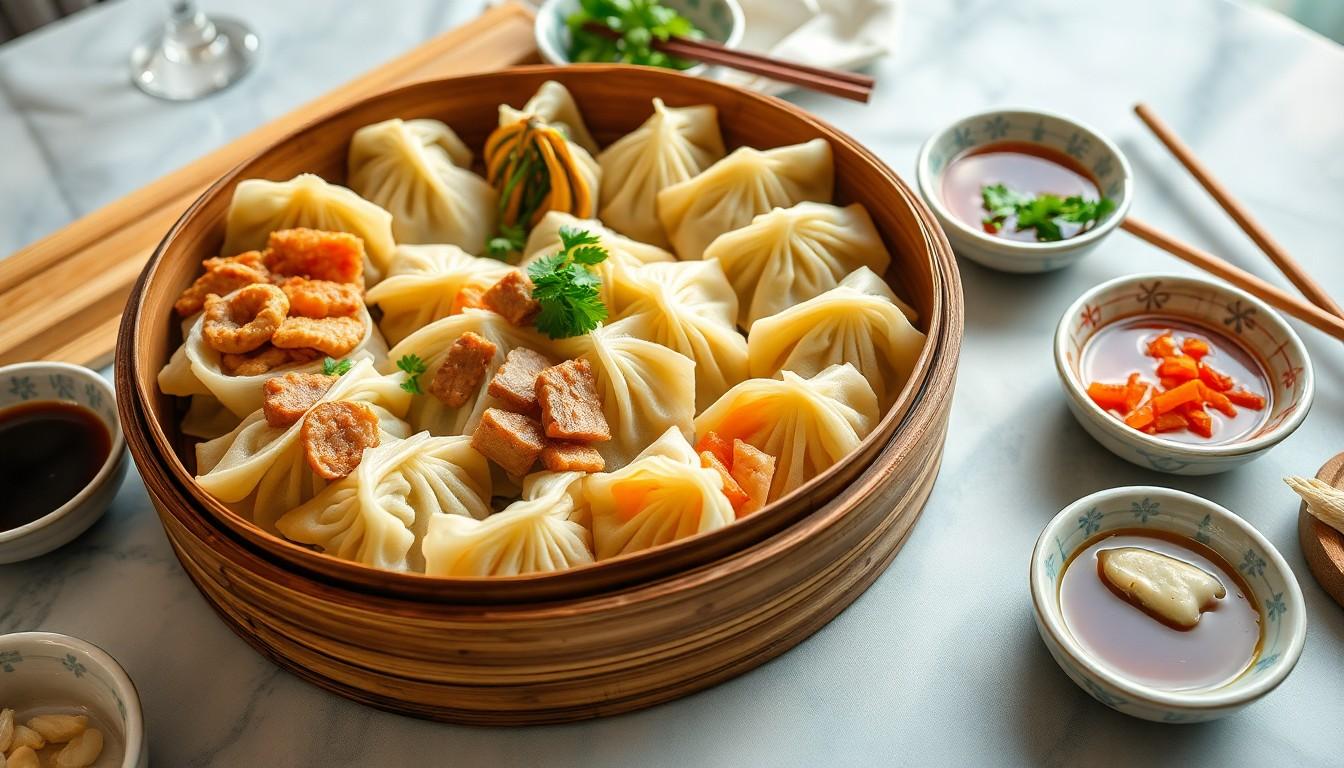Bikimsum might be the culinary equivalent of a cozy blanket on a chilly day—deliciously comforting but a bit heavy on the stomach. Ever wondered why this delightful dish seems to take its sweet time to digest? It’s not just you; many find themselves pondering the mysteries of their favorite dumplings long after the last bite.
Packed with rich flavors and a variety of fillings, bikimsum can feel like a party in your stomach that just won’t end. But what’s the deal? Is it the ingredients, the cooking method, or perhaps a secret plot by the dumpling gods to keep us yearning for more? Let’s dig into the science behind this tantalizing treat and uncover why bikimsum loves to linger just a little longer than expected.
Understanding Bikimsum
Bikimsum is a beloved culinary dish known for its comforting yet heavy nature. This dish captures attention with its unique composition and its effects on digestion.
Definition and Ingredients
Bikimsum consists of various dumplings filled with diverse ingredients. Typical fillings include meats, seafood, and vegetables, all wrapped in a doughy exterior. The dough varies in thickness and composition, often containing flour, yeast, and water. Unique flavorings enhance these fillings, such as garlic, ginger, and soy sauce. Different regional variations showcase local ingredients, providing a rich tapestry of flavors and textures. Each ingredient contributes to bikimsum’s overall weight, influencing how the body processes it, and setting the stage for prolonged digestion.
Nutritional Composition
Nutritionally, bikimsum features a balance of macronutrients. These dumplings typically offer protein from meat or seafood, healthy fats, and carbohydrates from the dough. Fiber content varies based on vegetable inclusion, aiding digestion. Caloric density increases due to fats used in cooking methods like steaming or frying. High sodium levels often arise from added sauces or seasoning. Each component plays a role in how the body breaks down bikimsum, meaning a fuller feeling may persist longer after consumption. Understanding these elements clarifies why bikimsum often takes significant time to digest.
The Digestive Process

Bikimsum’s prolonged digestion stems from its rich composition and complex preparation methods. Understanding the digestive process reveals why this dish can feel heavy for hours.
Overview of Digestion
Digestion begins in the mouth, where enzymes in saliva break down some carbohydrates. After swallowing, food travels down the esophagus into the stomach. The stomach further digests bikimsum through acid and enzymes. This process can take several hours, especially with dense foods. Nutrients then enter the small intestine, where absorption occurs, necessitating more time for heavy, filling items. Each step requires coordination, affecting how long bikimsum stays in the digestive system.
Factors Affecting Digestion Time
Several factors influence how long bikimsum takes to digest. Ingredients such as dough thickness and filling types contribute significantly. Greater fat and protein content usually extend the digestion time. Cooking methods, like steaming or frying, also play a role; frying increases calorie density, which may slow digestion. Fiber from vegetable fillings can aid digestion but varies by the recipe, impacting overall time. High sodium levels present in sauces prompt water retention, which compounds feelings of fullness.
Why Does Bikimsum Take Long to Digest?
Bikimsum’s prolonged digestion can be attributed to its ingredient composition and preparation methods.
Role of Ingredients
Ingredients in bikimsum significantly impact digestion time. Various fillings, such as meats, seafood, and vegetables, introduce different levels of protein and fat. These macronutrients require more time for the body to break down. Dough thickness also plays a crucial role; thicker dough demands additional digestive effort. Unique flavor components, like garlic and ginger, enhance the dish but may not contribute significantly to digestion speed. Regional ingredient variations further complicate matters, as each adds its own digestibility factors. Overall, the combination of rich fillings and dense dough creates a mixture that prolongs the digestive process.
Fiber and Its Impact
Fiber content in bikimsum can influence digestion positively. Vegetable fillings often bring necessary fiber to the dish, aiding in digestive regulation. This fiber promotes a slower digestion, fostering a feeling of fullness. Increased water retention, linked to sodium-rich sauces, can exacerbate the sensation of a full stomach. Together, these elements create a complex interaction that impacts how quickly bikimsum moves through the digestive system. Notably, while fiber supports overall digestion health, it also contributes to the lingering feeling often experienced after consuming bikimsum.
Health Implications
Bikimsum’s prolonged digestion carries various health implications. Understanding these can aid in making informed dietary choices.
Benefits of Slow Digestion
Slow digestion can lead to sustained energy levels. Nutrients from bikimsum release gradually, providing a consistent energy supply. Its high fiber content supports digestive health, promoting regularity. This process can also enhance satiety, helping individuals control portion sizes and avoid overeating. The feeling of fullness may discourage unhealthy snacking between meals. Additionally, a slower digestion can regulate blood sugar levels, contributing to overall metabolic health.
Potential Drawbacks
Extended digestion often leads to discomfort. Individuals may experience bloating or heaviness, particularly after consuming large portions of bikimsum. High sodium levels in the accompanying sauces can exacerbate water retention, intensifying these feelings. If consumed in excess, this dish may disrupt normal digestive processes, causing irregularities such as gas. The complex breakdown of proteins and fats can strain the stomach, especially for those with sensitive digestive systems. Awareness of these potential drawbacks allows for more mindful consumption of bikimsum.
Conclusion
Bikimsum’s prolonged digestion is a fascinating aspect of this beloved dish. Its rich composition and diverse ingredients create a complex interaction that challenges the digestive system. While the dense dough and hearty fillings contribute to a feeling of fullness, the presence of fiber can aid in digestive regulation.
Understanding these factors can help individuals appreciate bikimsum more fully. Enjoying this dish mindfully allows for a balance between savoring its flavors and considering its health implications. By being aware of how bikimsum affects digestion, diners can make informed choices that enhance their culinary experience while promoting overall well-being.

